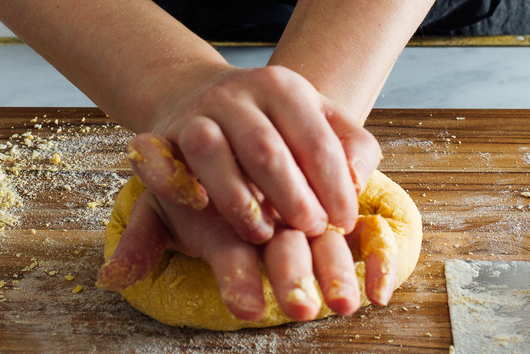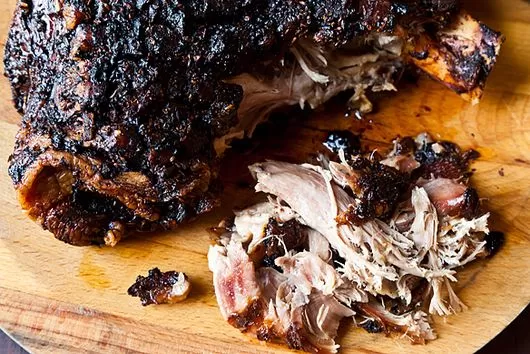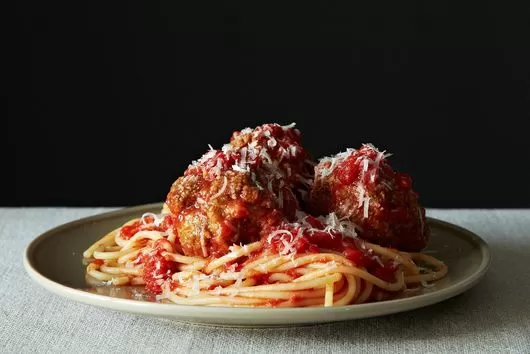Master Pasta Dough, Two Ways
PREP TIME
1 hour
COOK TIME
6 minutes
SERVES
2 to 4
Ingredients
Egg Pasta Dough
275 grams
(~2 1/4 cups) '00' soft wheat or all-purpose flour
25 grams
(~2 tablespoons) semolina or semola rimacinata flour* (SEE NOTE)
170 grams
(approximately 3 whole eggs and 1 egg yolk, depending on egg size), whisked together
Durum Wheat & Water Pasta Dough
300 grams
(~2 cups) durum wheat flour (semolina or semola rimacinata)
150 milliliters
(~2/3 cup) very warm water
Ingredients
- Choose the type of dough you'd like to make, based on the shape you'd like to achieve. Generally, egg pasta dough is used for most stuffed pastas like ravioli, tortellini, and agnolotti; long strands such as tagliatelle and pappardelle; some short hand-formed shapes like garganelli. Durum wheat and water pasta dough is used for Strascinati ("dragged") shapes, such as orecchiette; many short, hand-formed shapes, like cavatelli and capunti; some stuffed pastas such as Sardinian ravioli (culurgiones); some long strands such as sagne ritorte (twisted tagliatelle).
- Weigh the flour(s) in a large mixing bowl. Either transfer the flour to a clean surface (ideally a large wooden board) or, to avoid mess, keep it in the bowl. Make a wide hole (or “well”) with your fist in the center of the flour so you can see the bottom of the surface or bowl. There should be a wall of flour on all sides.
- Add the eggs or water to the well and, using a fork, gradually incorporate the flour into the liquid in a circular motion—à la scrambled eggs—until a thick, smooth, and custard-like batter forms.
- When the mixture is too thick to continue whisking with the fork, incorporate the remaining loose flour by folding and pressing it into the center of the well with a bench scraper or your fingers. Whenever you hit a wet area, fold and press in more flour—you should be able to incorporate nearly all of the flour into a rough and shaggy mass, though it’s normal to have a few tablespoons left over. If you started in a bowl, transfer the shaggy dough to a flat surface, along with any remaining loose flour and flaky pieces. (PS: it’s supposed to be a total mess at this point, so don’t panic!)
- Knead the dough vigorously by stretching it forward with the heel of your hand, then folding it halfway over on itself. Do this a few times in one direction, then rotate the dough 90 degrees and repeat, shifting 90 degrees every few strokes. You may still have leftover flour—remove it once the dough has come together and there are no more sticky areas. If the dough still feels dry and crumbly after the first few minutes of kneading, add small amounts of water with your fingertips to the dry areas and continue kneading until smooth. If the dough is very soft and sticky, dust its surface with light layers of flour until it firms up.
- After about 10 minutes, the dough should be smooth and firm (pliable but not soft). When it bounces back from a light touch to the surface, wrap it tightly in plastic and allow it to rest at room temperature for about 30 minutes.
- After the dough has rested, shape and cook as desired.
- NOTE: If semolina or semola rimacinata flours are unavailable, omit the semolina flour from this recipe and use the same weight in ‘00’ or all-purpose flour.






